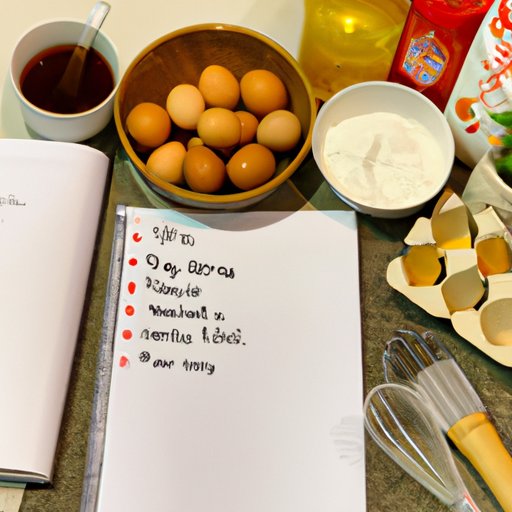Introduction
Cooking is an essential skill for anyone looking to become more self-sufficient. Knowing how to cook can save you time and money, as well as help you make healthier meals. Plus, it’s just plain fun! With the right tools and knowledge, anyone can learn how to cook.
This guide will teach you how to get started with cooking. We’ll cover where to find recipes, cooking tips and tricks, supplies, and how to start experimenting with flavors and ingredients. By the end of this article, you’ll have the basics down and be ready to start cooking!
Research Recipes
The first step in learning how to cook is finding recipes. There are plenty of resources available online, as well as in cookbooks and magazines. When looking for recipes, look for ones that sound interesting and easy to follow. Avoid complicated recipes with hard-to-find ingredients. Instead, look for simple recipes that use common ingredients and step-by-step instructions.
When researching recipes, it’s also important to consider the type of food you’re making. If you’re a vegetarian, look for vegetarian recipes. If you’re trying to eat healthy, look for low-fat or low-calorie recipes. There are plenty of options out there, so take your time and find the right recipe for you.
Read Cooking Tips and Tricks
Once you’ve found a few recipes, it’s time to start learning about cooking techniques. Reading up on cooking tips and tricks will help you become a better cook. Look for tips on how to prepare ingredients, cook different kinds of food, and store leftovers. There are plenty of websites and books dedicated to teaching cooking techniques, so do some research and find the best source for you.
It’s also helpful to watch cooking shows or read cooking blogs. Seeing experienced cooks in action can be a great way to learn how to cook. Watching videos and reading stories from other home cooks can also be inspiring and help you come up with new ideas for recipes.
Gather Your Supplies
Now that you know what recipes you want to make and have some cooking tips under your belt, it’s time to gather your supplies. Different recipes call for different tools and ingredients, so make sure you have everything you need before you start cooking. The most basic kitchen tools include pots and pans, measuring cups and spoons, knives, cutting boards, and spatulas.
You should also have a variety of ingredients on hand, such as oils, spices, herbs, and basic pantry items like flour, sugar, and rice. Make sure you have all the ingredients called for in the recipes you plan on making. If you don’t have something, don’t worry – you can always substitute something else.
Start off Simple
When you’re first starting out, it’s best to stick to simple recipes. Look for dishes that only require a few ingredients and don’t require any fancy techniques. Soups, salads, sandwiches, and one-pot dishes are all good choices for beginner cooks. Once you’ve mastered these dishes, you can move on to more complex recipes.
It’s also important to read through the entire recipe before you start cooking. This will give you an idea of what to expect and allow you to prepare ahead of time. For example, if a recipe calls for pre-cooked chicken, make sure you have cooked chicken ready to go before you start cooking.
Experiment
Once you feel comfortable with the basics of cooking, it’s time to start experimenting. Try adding different herbs and spices to recipes to see how they change the flavor. Substitute ingredients to create new dishes. Or try combining two recipes to create something totally unique. The possibilities are endless!
Experimenting with cooking can be fun and rewarding. Don’t be afraid to make mistakes – you never know when you might stumble upon something delicious!
Conclusion
Learning how to cook can be intimidating, but it doesn’t have to be. With the right tools and knowledge, anyone can become a skilled home cook. Start by researching recipes, reading up on cooking tips and tricks, gathering supplies, and starting off with simple dishes. Once you’ve got the basics down, start experimenting with flavors and ingredients to create something truly unique.


